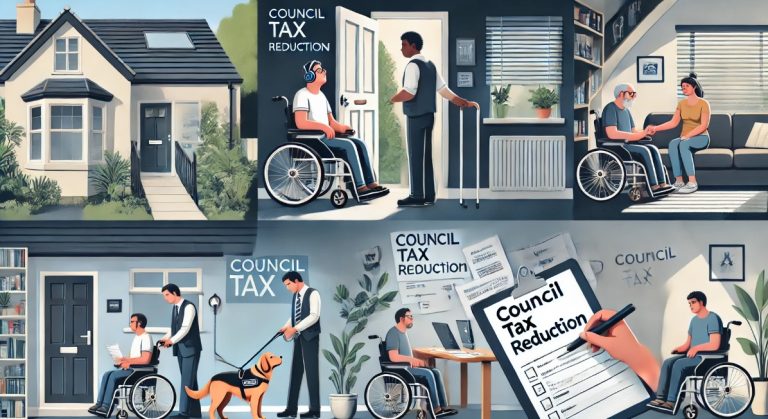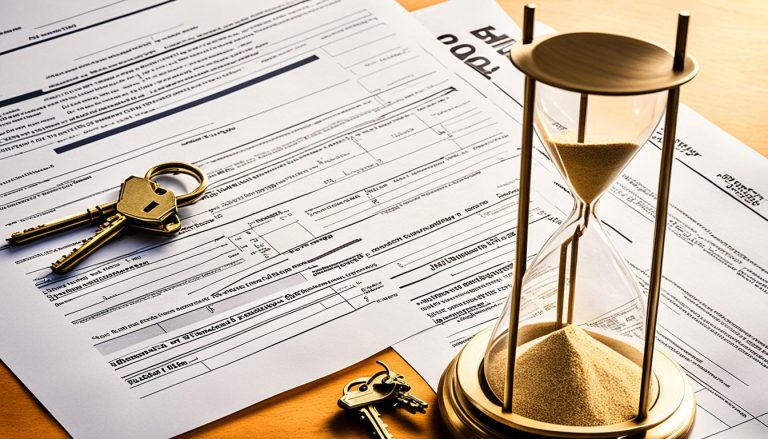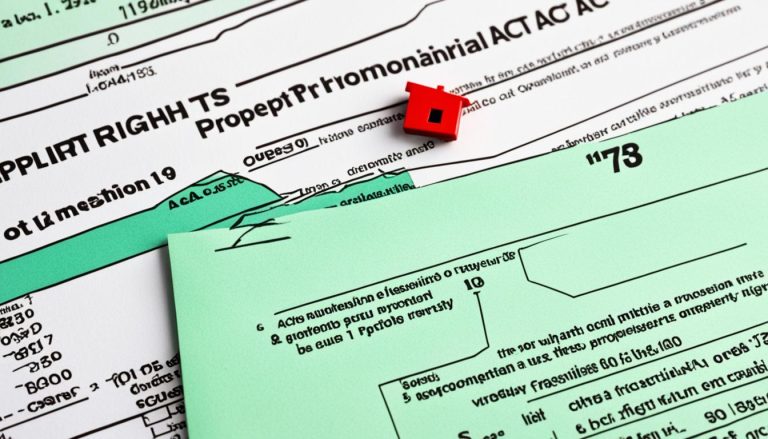Did you know the average UK home has £35,000 worth of contents? Yet, 1 in 4 homes lack enough contents insurance. This makes contents insurance crucial for both homeowners and renters. It covers damage, theft, or loss of your valuable items.
Contents insurance, also known as household contents insurance or personal possessions insurance, covers your personal items. This includes furniture, electronics, clothes, jewellery, and more. With a contents insurance policy, you can rest easy knowing your belongings are safe from unexpected events.
What is Contents Insurance?
Contents insurance is a policy that protects your personal belongings and household items at home. It covers the cost of replacing or fixing your stuff if it gets damaged, destroyed, or stolen. This insurance is useful whether you own or rent your home.
Coverage for Personal and Home Possessions
A good contents insurance policy covers many items, such as:
- Furniture, like sofas, beds, and tables
- Electrical appliances, including TVs, laptops, and phones
- Clothing, shoes, and accessories
- Jewellery, watches, and other valuables
- Home entertainment systems, like gaming consoles and speakers
- Kitchen equipment, such as pots, pans, and cutlery
- Decorative items, including artwork, ornaments, and rugs
With a contents insurance policy, you can rest easy knowing your stuff is safe from risks like fire, flooding, storms, and theft. This is especially useful for renters or homeowners with lots of valuable items.

| Item | Estimated Cost |
|---|---|
| Sofa | £800 |
| Laptop | £1,000 |
| Jewellery | £2,500 |
| Clothing | £1,200 |
| Kitchen appliances | £1,500 |
What is Contents Insurance for Homeowners and Renters?
Contents insurance is key for both homeowners and renters in the UK. For homeowners, it shields personal belongings and household items built up over time. If your stuff gets damaged, lost, or stolen, this insurance can help pay for new ones.
For renters, it’s vital because the landlord’s insurance doesn’t cover your things. Renters insurance protects your stuff, whether you own or rent your home. It gives peace of mind and financial safety for those not owning their homes.
Contents insurance covers many personal items, like furniture, electronics, clothes, and jewellery. It also includes outdoor items like garden gear and bikes. This insurance helps replace valuable items if they’re damaged or taken, easing the financial hit.
| Coverage for Homeowners | Coverage for Renters |
|---|---|
|
|
Whether you own or rent your home, contents insurance is a smart choice. It guards your belongings and offers financial safety against sudden damage or theft. Knowing the differences in coverage for homeowners and renters helps you pick the right policy for your needs.

What Does Contents Insurance Cover?
Contents insurance protects your personal items and household goods from various risks. It offers financial help if your insured contents get damaged, destroyed, or stolen. It’s key to know what your contents insurance policy covers to protect your belongings.
Risks Covered: Fire, Flooding, Storms, and Theft
A typical contents insurance policy covers your household goods against fire, flooding, storms, and theft. If these events damage or destroy your items, your insurer can pay for repairs or replacements. This way, you won’t face the cost alone.
Additional Coverage Options
Many contents insurance policies offer extra coverage to boost belongings protection. These options include:
- Accidental damage cover: Covers your items if they get damaged by accident.
- Personal possessions cover: Covers your belongings even when you’re outside your home.
- Legal expenses cover: Helps with legal costs if you need to take legal action about your insured contents.
It’s vital to check your contents insurance policy details to see what’s covered and what’s not. This ensures your personal and home possessions are well protected.
| Coverage Type | Description |
|---|---|
| Fire, Flooding, Storms | Protects your household goods from damage or destruction by these perils. |
| Theft | Covers the belongings indemnity if your insured contents are stolen. |
| Accidental Damage | Provides cover for accidental harm or breakage to your items. |
| Personal Possessions | Extends coverage to your belongings outside the home. |
| Legal Expenses | Offers financial help for legal actions related to your insured contents. |
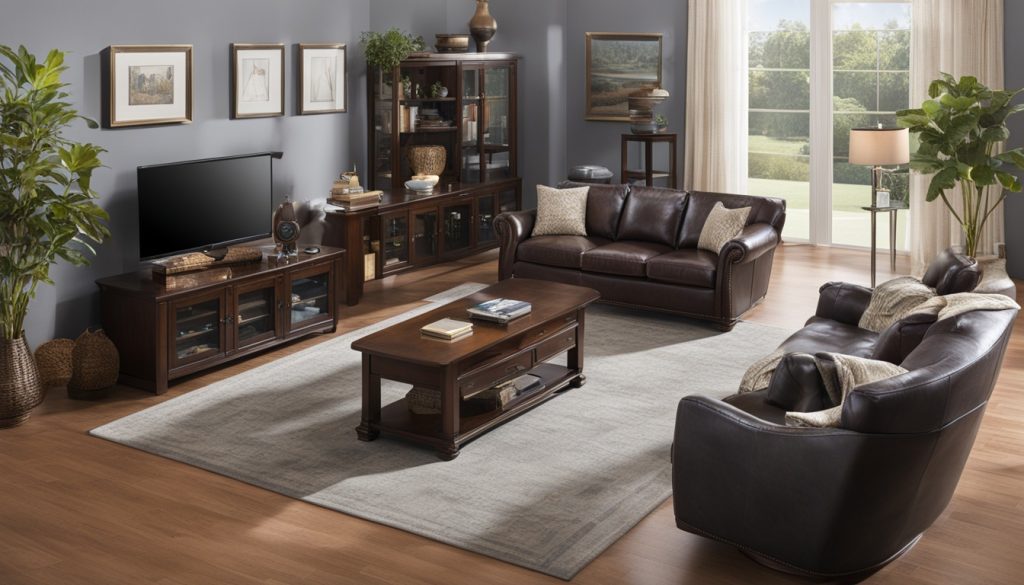
Choosing the Right Contents Insurance Policy
Choosing the right contents insurance policy is key to protecting your home and belongings. In the UK, you have two main options: sum-insured and bedroom-rated policies. Knowing the differences between them can guide you to the best choice for your valuables.
Sum-Insured vs. Bedroom-Rated Policies
Sum-insured policies are based on how much your household items are worth. You must estimate the cost to replace everything, like furniture and electronics. Bedroom-rated policies, on the other hand, charge based on your home’s number of bedrooms. This makes it easier to understand the coverage.
Factors to Consider When Selecting a Policy
- Premium cost: Look at different insurers to find a policy that suits your budget.
- Excess: Know the upfront cost you’ll pay if you make a claim, as it affects the policy’s value.
- Coverage limits: Make sure the policy covers all your contents, especially valuable items or collectables.
- Additional features: Choose policies with extra cover, like accidental damage or personal possessions, if needed.
When picking a contents insurance policy, think about what you need and compare quotes from various providers. This ensures you get the best mix of coverage, cost, and extra features for you and your family.
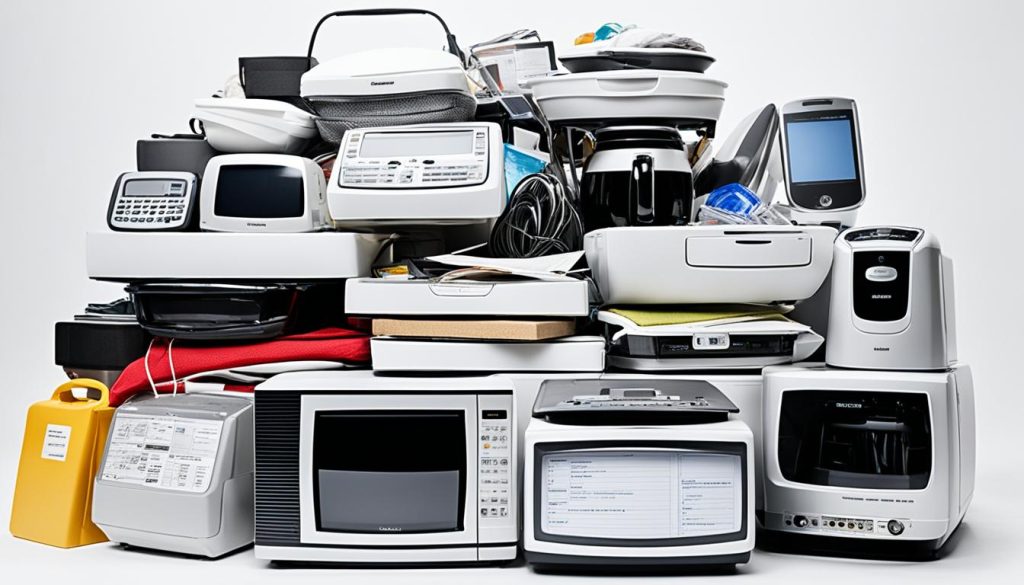
What to Do in Case of a Contents Insurance Claim
If you need to make a contents insurance claim, follow these steps. First, tell your insurer about the incident and the items affected right away. You’ll need to provide evidence like receipts or photos to back up your claim.
Common Problems with Claims
But, be aware of common issues that might come up when making a claim. You might find your contents are worth more than your policy covers. Some policies also set limits on how much you can claim for each item. This could affect your claim for expensive items.
Tips for Successful Claims
- Keep accurate records of your belongings, including purchase dates, prices, and descriptions.
- Maintain photographic evidence of your insured contents, as this can help support your claim.
- Be transparent with your insurer and provide all the necessary information and documentation they require.
- Familiarise yourself with the terms and conditions of your contents insurance policy to understand your coverage and any potential limitations.
- Act quickly when making a claim, as some insurers may have strict time limits for reporting incidents.
By following these tips, you can increase your chances of a smooth and satisfactory claims experience when it comes to your home’s contents insurance coverage.
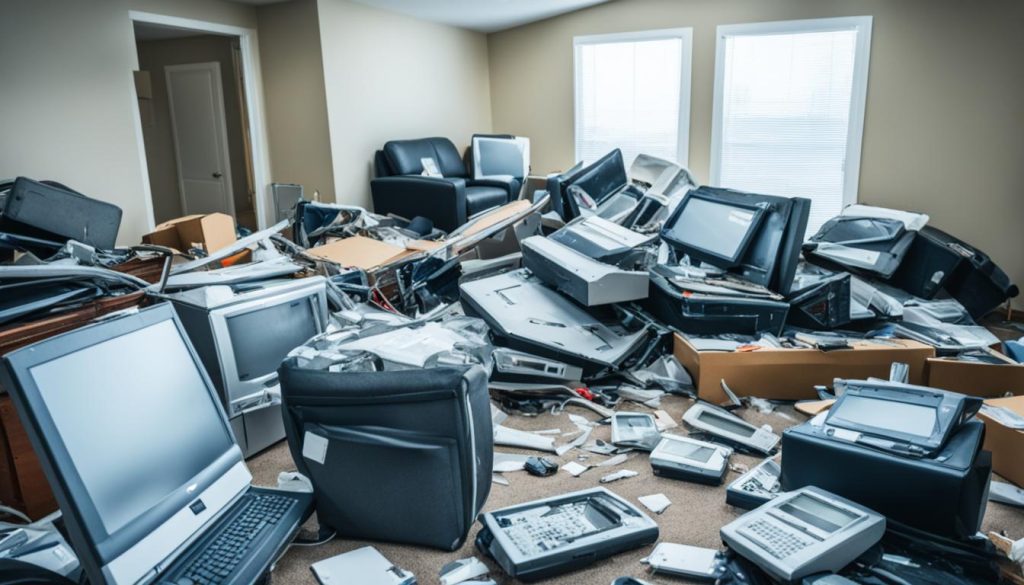
| Common Claim Problems | Tips for Successful Claims |
|---|---|
| Underinsurance | Keep accurate records of belongings |
| Limits on single item values | Maintain photographic evidence |
| Strict time limits for reporting incidents | Be transparent with your insurer |
Advantages and Disadvantage of Contents Insurance
Home contents insurance is a big help for homeowners and renters in the UK. It protects your personal stuff from unexpected disasters like fire, flooding, or theft. If something bad happens, it can help you get your items back or replaced.
It also gives you peace of mind. This is great for people with valuable or special items. You won’t have to pay for everything yourself if something gets lost or damaged.
But, there are downsides to contents insurance too. The cost of contents insurance can be high, especially if you’re watching your spending. You might end up not having enough insurance if you don’t know how much your stuff is worth or if your things change.
The claims process can be tricky, and sometimes claims get turned down. This means you might have to pay for repairs or replacements yourself. Always check the policy details to know what’s not covered.
Deciding on contents insurance depends on your situation. For many, the benefits of having financial protection and peace of mind are worth it. So, for homeowners and renters, it’s often a good choice.
| Advantages of Contents Insurance | Disadvantages of Contents Insurance |
|---|---|
|
|
Does contents insurance cover kitchen units?
Contents insurance is key to protecting your home and stuff. But, many people might be surprised to find that standard contents insurance doesn’t cover kitchen units or other built-in parts. These are seen as part of the building and should be covered by buildings insurance, not contents insurance.
Yet, some contents insurance companies offer extra coverage for kitchen units and other permanent items. This is great if you have expensive or custom-made kitchen units you want to protect. Always check with your insurer to see if this is an option and what it costs extra.
How much your contents insurance covers kitchen units depends on your policy and provider. Built-in appliances and fittings might be covered, but free-standing units or furniture might not be. It’s crucial to know what your policy says to make sure your kitchen and other valuable items are safe.
Factors to Consider
- Standard contents insurance policies usually don’t cover kitchen units or other built-in parts.
- These are seen as part of the building and are covered by buildings insurance.
- Some contents insurance companies offer extra coverage for kitchen units and other permanent items as an add-on.
- The coverage level can vary, so it’s important to check your policy details.
- Free-standing kitchen units or furniture might not be covered by contents insurance.
Knowing the limits and add-ons of your contents insurance helps protect your kitchen units and other valuable items. This gives you peace of mind and financial security if something unexpected happens.
Does contents insurance cover theft outside the home?
Contents insurance is key in protecting your stuff, even when you’re not at home. Many UK contents insurance policies offer “all-risks” or “personal possessions” cover. This means your valuables are safe outside your property too.
These policies usually cover things like jewellery, laptops, mobile phones, and more against theft or damage away from home. It gives you peace of mind, especially when you’re out and about.
But remember, there might be limits on what you can claim for each item or the total value of your stuff outside your home. The exact details can differ between insurance companies. So, make sure to check your policy well.
When picking a contents insurance, don’t forget to look at the “all-risks” or “personal possessions” cover. This way, your valuables are safe, whether at home or out and about.
| Feature | Description |
|---|---|
| All-Risks Cover | Protects your belongings against theft or accidental damage when taken outside the home |
| Personal Possessions Insurance | Covers the cost of replacing your valuables, such as jewellery, laptops, and mobile phones, if they are lost, stolen, or damaged |
| Limits and Exclusions | There may be limits on the amount you can claim for individual items or the total value of possessions covered outside the home |
Knowing your contents insurance policy well means your personal possessions are safe, at home or away.
Conclusion
In conclusion, contents insurance is key for homeowners and renters in the UK. It protects your personal stuff and household items from risks like fire, flooding, storms, and theft. With the right contents insurance policy, you’ll be covered if your things get damaged, destroyed, or stolen.
There are some downsides to consider, but the benefits of contents cover are big. You’ll have peace of mind and can bounce back from unexpected events. It’s a smart choice for most UK households to protect their home contents and insure their household items.
Contents insurance acts as a safety net for unexpected incidents and emergencies. By knowing the benefits and things to think about, you can choose the right insurance for your needs. This way, your home and belongings will have the protection they need.
FAQ
What Does Contents Insurance Cover?
It covers your possessions against risks like fire, flooding, storms, and theft. Policies often include extra cover for accidental damage, items taken outside, and legal costs.
What are the Factors to Consider When Selecting a Contents Insurance Policy?
Choose between sum-insured or bedroom-rated policies. Think about the premium, excess, coverage limits, and extra features or exclusions.
What Should I Do in Case of a Contents Insurance Claim?
Notify your insurer quickly after an incident. Give details of what happened and the items affected. Be ready to show receipts or photos to support your claim.

